BCHP 11 (Invasion of Ptolemy III Chronicle)
The Chronicle concerning the Invasion of Ptolemy III (the "Ptolemy III Chronicle"; BCHP 11) is one of the Mesopotamian chronicles written in ancient Babylonia in the Hellenistic Period. It tells how, during the Laodicean War (246-241 BCE), the Ptolemaic king Ptolemy III Euergetes invaded Mesopotamia and laid siege to Babylon (246/245).
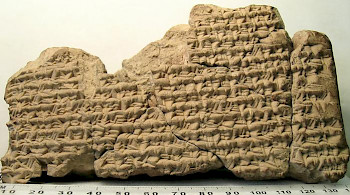
The Chronicle concerning the Invasion of Ptolemy III (the "Ptolemy III Chronicle"; BCHP 11) is one of the Mesopotamian chronicles written in ancient Babylonia in the Hellenistic Period. It tells how, during the Laodicean War (246-241 BCE), the Ptolemaic king Ptolemy III Euergetes invaded Mesopotamia and laid siege to Babylon (246/245). The cuneiform tablet (BM 34428) is in the British Museum.
On this webpage, a new reading is proposed; the official publication will be in I.L. Finkel, R.J. van der Spek, R. Pirngruber, Babylonian Chronographic Texts from the Hellenistic Period (2020; = BCHP; Writings of the Ancient World).
Description
- Bm 34428 = Sp. II: many joins, presumably by Th.G. Pinches
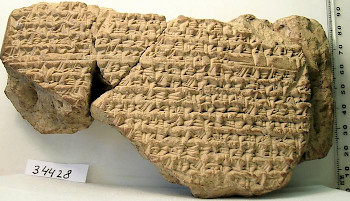
A part below the middle of the tablet is preserved. Right and left edges are intact, upper and lower sides are broken off. In view of the curvature of the tablet, not many lines have been lost at the bottom end, though the lower edge may have been inscribed. The thickness at the lower side is 3 cm, at the upper end it is 4 cm. The length of the tablet is 7.8 cm, the width 15 cm. The script is clear.
Outbreak of the Laodicean War
Although the year number of the chronicle is lost, it is practically certain that it is a chronicle concerning year 66 of the Seleucid Era. It reports the invasion of Ptolemaic army and that invasion can only have been the expedition of Ptolemy III Euergetes in 246/245 BCE in the Laodicean (or Third Syrian) War.
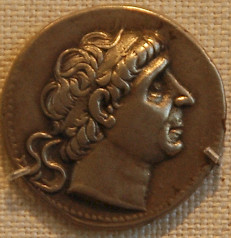
This expedition was caused by the fact that shortly before his death in the summer of 246 the Seleucid king Antiochus II Theos had repudiated his second wife Berenice Phernephorus, daughter of the Ptolemaic king Ptolemy II Philadelphus (who died 28 January 246), in favor of his first wife Laodice and her two sons Seleucus and Antiochus Hierax. Antiochus resided with Laodice in Ephesus, while Berenice stayed in Antioch.
The news of Antiochus' death reached Babylon on 20 Abu (month V) 66 SE = 19 August 246.note Seleucus II Callinicus was proclaimed king, and immediately accepted as such in Babylon. No king list, nor a diary, or a chronicle knows any other king than Seleucus II after the death of Antiochus II.
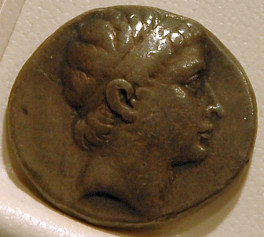
However, the Seleucid Empire now became the bone of contention of two queens, Berenice in Antioch and Laodice in Ephesus. The prospected kings were both young. Laodice's children Seleucus and Antiochus were about 19 and 14 years of age, Berenice's son was a mere child.note Laodice had partisans in Antioch. One of the chief magistrates of the city kidnapped the child and killed him.note The majority of the population seems to have been in favor of the queen, who established herself in the royal palace at Daphne.note
Meanwhile, the new Egyptian king, Ptolemy III Euergetes, decided to come to the aid of his sister. In September, he launched an attack on the Seleucid Empire.note He first arrived in Seleucia in Pieria, where he was welcomed, then proceeded to Antioch, where he was also received with enthusiasm, if the papyrus that reports this reception should not be dismissed as propaganda.note Berenice, however, was so stupid as to leave her safe haven and was instantly killed; a sign that public opinion was not as favorable to Berenice as the pro-Ptolemaic sources suggest. According to this papyrus, Berenice was still alive when Ptolemy arrived, but this is probably untrue.
The Laodicean War
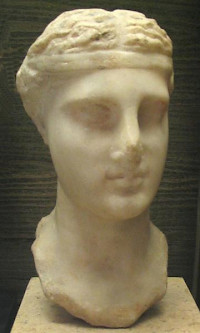
For our purpose, the continuation of Ptolemy's expedition is of the main interest. Several sources tell us that Ptolemy made a grand campaign into the interior of the Seleucid Empire and even conquered it completely. The most eloquent source is this respect is the Adoulis inscription, found by the sixth-century monk Cosmas Indicopleustes on the Persian Gulf.note The text runs as follows:
Great King Ptolemy, son of King Ptolemy [II Philadelphus] and Queen Arsinoe, the Brother- and Sister Gods, the children of King Ptolemy [I Soter] and Queen Berenice the Savior Gods, descendant on the paternal side of Heracles the son of Zeus, on the maternal of Dionysus the son of Zeus, having inherited from his father the kingdom of Egypt and Libya and Syria and Phoenicia and Cyprus and Lycia and Caria and the Cyclades islands, led a campaign into Asia with infantry and cavalry and fleet and Troglodytic and Ethiopian elephants, which he and his father were the first to hunt from these lands and, bringing them back into Egypt, to fit out for military service.Having become master of all the land this side of the Euphrates and of Cilicia and Pamphylia and Ionia and the Hellespont and Thrace and of all the forces and Indian elephants in these lands, and having made subject all the princes in the (various) regions, he crossed the Euphrates river and after subjecting to himself Mesopotamia and Babylonia and Sousiana and Persis and Media and all the rest of the land up to Bactria and having sought out all the temple belongings that had been carried out of Egypt by the Persians and having brought them back with the rest of the treasure from the (various) regions he sent his forces to Egypt through the canals that had been dug.note
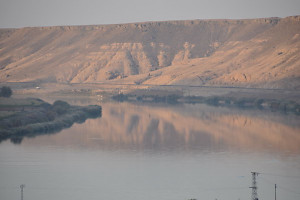
The other major source for this campaign is Appian of Alexandria, who briefly treats the history of the Seleucid kings after Seleucus I:
But after the death of Seleucus, the kingdom of Syria passed in regular succession from father to son as follows: the first was the same Antiochus [I] who fell in love with his stepmother [Stratonice I], to whom was given the surname of Soter [the Savior] for driving out the Gauls who had made an incursion into Asia from Europe. The second was another Antiochus [II], born of this marriage, who received the surname of Theos [the God] from the Milesians in the first instance, because he slew their tyrant, Timarchus. This Theos was poisoned by his wife. He had two wives, Laodice and Berenice, the former a love-match, the latter a daughter pledged to him by Ptolemy [II] Philadelphus. Laodice assassinated him and afterward Berenice and her child. Ptolemy [III], the son of Philadelphus, avenged these crimes by killing Laodice. He invaded Syria and advanced as far as Babylon. The Parthians now began their revolt, taking advantage of the confusion in the house of the Seleucids.note
Polyaenus speaks about a subjection without combat of a territory "from the Taurus to India".note Justin claims that he would have obtained the whole kingdom of Seleucus, had he not been forced to return in view of a revolt at home.note According to Jerome, Ptolemy subjected apart from Syria and Cilicia, the Upper Parts beyond the Euphrates, where he appointed a certain Xanthippus governor.note According to Catullus, Ptolemy set out to ravage "the territories of Assyria" and "conquered Asia and added it to the frontiers of Egypt".note
The extent of Ptolemy’s campaigns have been much debated. The claim that he reached the Indus is generally rejected and correctly so. In addition, the campaign into Babylonia was put in doubt, because no Babylonian source ever mentioned the invasion or acknowledged any other king than Seleucus. This chronicle now changes the situation.
War in Babylonia

The death of Antiochus II effected an eventful year for the Babylonians. The Egyptian invasion was a clear fact, though only short-lived. Appian seems to be right in that Ptolemy advanced as far as Babylon. Ptolemy's return may indeed be attributed to the sedition in Egypt. The fact that the Egyptian troops were unable to conquer the palace of Babylon may have been a factor as well.
The chronicle contains no year number, only a month name, viz. Tebêtu (X), which is the second entry. The chronicle as preserved starts relating events of month IX. In view of the fact that the lower part of the tablet is preserved, we assume that the tablet contains a report of the very eventful year SE 66, either starting with month I or with month V, the month in which the death of Antiochus II was reported in Babylon. The arrival of the Ptolemaic forces in month IX (26 November-25 December 246 accords well with the accepted chronology. The troops were still in Babylon in month XI (24 January-22 February 245) or XII (23 February-22 March). The end of the campaign is not recorded in the preserved part of the chronicle. The story breaks off with heavy fighting and manslaughter in Babylon, where the palace could not (yet) be captured. Street fighting in Seleucia is also recorded.
The first contemporary document dated to Seleucus II is from 22.III.67 SEB = 11 July 245 BCE. By that time, the Ptolemaic troops will have left the country. We should, however, not give too much weight to the meaning of this document. It is apparent from all Babylonian documents that Seleucus was accepted as king from the start, that the Ptolemaic king was treated as a foreign invader, an enemy, his troops indicated as Hanaeans, which word probably had a negative connotation, as is made clear by the apposition "who did not fear the gods". If it is true that Ptolemy was enthusiastically accepted in Seleucia in Pieria and Antioch on the Orontes, this certainly does not hold true for Babylon. The land grant of Laodice, Seleucus and Antiochus Hierax during the reign of Antiochus II may have rallied Babylonian support.
Summary of the Invasion of Ptolemy III Chronicle
- Month IX (26 November-25 december 246): Ptolemy III Euergetes arrives with a large army in Seleucia on the Euphrates (= Sippar?) (2'-3'). The chief guardian (rab sikkati) shuts himself in with a royal garrison in the royal palace of Babylon in fear of the advance of the army of Ptolemy. It may be assumed that Ptolemy was not yet able to conquer this city.
- Month X (26 December 246-23 January 245): Ptolemaic forces, armed in full hoplite armor (as opposed to the light armed garrison troops in the palace) break off the siege at Seleucia on the Euphrates and bring the siege engines before the wall of Babylon on the 10th = 9 January 245 BCE (6'-8'). On 13 January they attack the Bêlet Ninua Citadel, probably a stronghold in the wall of the West bank of the Euphrates (8'-9'). People who had taken refuge in the citadel leave it and run to the palace. While doing so they were massacred by the Ptolemaic troops (9'-11'). This means that the Egyptian troops had broken into the city. On 18 January, Xanthippus, the governor of Mesopotamia appointed by king Ptolemy, arrives with a large army in Babylon from Seleucia on the Euphrates. On 20 January Xanthippus enters Esagila, the temple of Marduk (14'-15'). The same day he performs offerings in the temple, possibly in emulation of Alexander the Great, who had done the same in 331 BCE. In addition he performs offerings "in the Greek fashion" and gives something (presents? tax exemption?) to the Babylonians (15'-rev.3'). Afterwards he visits another temple "and eats bread in it", apparently part of a Greek custom (see Ruin of Esagila Chronicle (BCHP 6). At this time, part of Babylon is in Ptolemaic hands, including the temple area. The royal palace, however, still holds out. Xanthippus brings in battle equipment and starts the siege of the palace. The chief guardian of the palace defends the palace, sends out troops to drive out the Ptolemaic army, but without success: the Seleucid garrison troops are slaughtered. It seems as though the chronicler criticizes the commander who stays safely in the palace, while his men die (rev. 4'-6').
- Month XI (24 January–22 February 245): The attacks on the palace continue, with the same result as before (rev. 7'-8'). On the 6th(?) Seleucus, the pahat (epistates) of Seleucia on the Euphrates, arrives in Babylon (rev. 9'). So it seems that this Seleucus, who saw that the siege of his own city was broken off, tried to come to the aid of Babylon. This, however, is an unscuccessful move. The troops of Seleucus are beaten in Babylon (rev. 10') and the Seleucid troops who had stayed in Seleucia, are massacred as well (rev. 12'). Meanwhile, the attacks on the palace continue, and due to the break, we shall never know whether the Egyptians became successful in the end. However that may be, from classical sources (above) we know that Ptolemy III had to return to Egypt because of sedition at home.
Obverse
[Obv.n'] [Kislîmu [IX = 26 November-25 December 246 BCE]
[Obv.1'] [.. .. .. .. .. .. .. .. .. .. .. .. .. ..] .. .. [.. .. .. .. .. ..]
[Obv.2'] [.. .. .. .. .. .. .. .. .. .. Ptolemy, the ki]ng of Egypt, arrived[3’] at
[Obv.3'] [Seleucia, the royal city, which is on the] Euphrates and the Royal Cana[l].note
[Obv.4'] [The chief guardian who was in the palace] [sh]ut in5’ [the army of the ki]ng, which was in Babylon, before P[tolemy?].
[Obv.5'] The gates [.. .. .. .. .. ..]x he captured and locked.
------------------------------------------
[Obv.6'] Tebêtu [X = 26 December 246-23 January 245 BCE]. That month, day 15 [t]h, (9 January), the Hanaean troops, who did not fear the gods, who were clad in iron panoply,
[Obv.7'] transferred[8’] battle equipment [and] numerous [siege en]gines, from the city of Seleucia,
[Obv.8'] the royal city, which is on the Euphrates, to Babylon. Day 19th (13 January)
[Obv.9'] they did battle with the commander of the Bêlet-Ninua Citadel.note The people who were in the citadel,
[Obv.10'] became frightened and they went out from the citadel. They arrived at the palace of the king. That day, the people
[Obv.11'] were slaughtered with iron weapons [b]y the Hanaean troops. That month, the 24th day (18 January),
[Obv.12'] a certain renowned prince, a representative of the king, who from the land of Egypt had come (= Xanthippus?), with troops
[Obv.13'] in great numbers, who were clad in iron panoply, from Seleucia, the royal city,
[Obv.14'] which is on the Euphrates, arrived at Babylon. On the 26th day (20 January) into Esagila
[Obv.15'] [he entered.. .. .. .. .. .. .. .. .. .. .. .. ..] .. .. .. That [d]ay, Esagila
Edge
[Edge.1] [.. .. .. .. .. .. .. .. .. .. .. .. .. .. .. .. .. .. .. .. .. .. ..] .. [..]
[Edge.2] [Lacuna]
Reverse
[Rev.1'] [One line lost]
[.. .. .. ..] .. .. [.. .. .. .. .. .. .. .. .. .. .. .. .. .. Offerings in the]
[Rev.2'] Greek fashion1’ withi[n Esagila they performed. .. .. .. .. .. .. .. ..]
[Rev.3'] they gave to the Babylonians. From Esagila he (Xanthippus?) went up and to the [.. ..] temple [he went].
[Rev.4'] Immediately he ate bread within it. Battle equipment he brought in. They did[5’] [battle]
[Rev.5'] with the chief guardian, who was in the palace. He (the chief guardian) was not hurt himself, but the men of the army
[Rev.6'] were beaten with iron weapons by[5’] his (= Xanthippus') troops and they were slaughtered.
------------------------------------------
[Rev.7'] [Shabatu (XI)?; 24 January-22 February 245]. That month, in order to do battle wi[th] the chief guardian, who was in the palace, the Hanaean troops [attacked (again).]
[Rev.8'] [He himself] was not hurt at all, but the men of the army were slaughtered by his troops with iron weapons.
[Rev.9'] [That month, day] 6 [+x]th [Se]leucus, the epistates of Seleucia, with[in? Babylon arrived.]
[Rev.10'] [His troops] were slaughtered [b]y the general in Babylon with iron weapons!? [.. ..]
[Rev.11'] [.. .. .. .. .. ..] his [troop]s, who were assigned to him in the city of Seleuci[a],
[Rev.12'] [.. .. .. .. .. .. ] their […..?]x in the streets of Seleucia were sl[aughtered…..?]
[Rev.13'] [That month, day nth, in order to do battle with] the chief guardian, who was in the palace, the [Hanaean] troops
[Rev.14'] [attacked. He himself was not hurt, but the men of the] army [were slaughtered] by the numerous troops [.. .. ..]
[Rev.15'] [.. .. .. .. .. .. .. .. .. .. the G]reek and a certain [.. .. .. ..]
[Remainder lost]